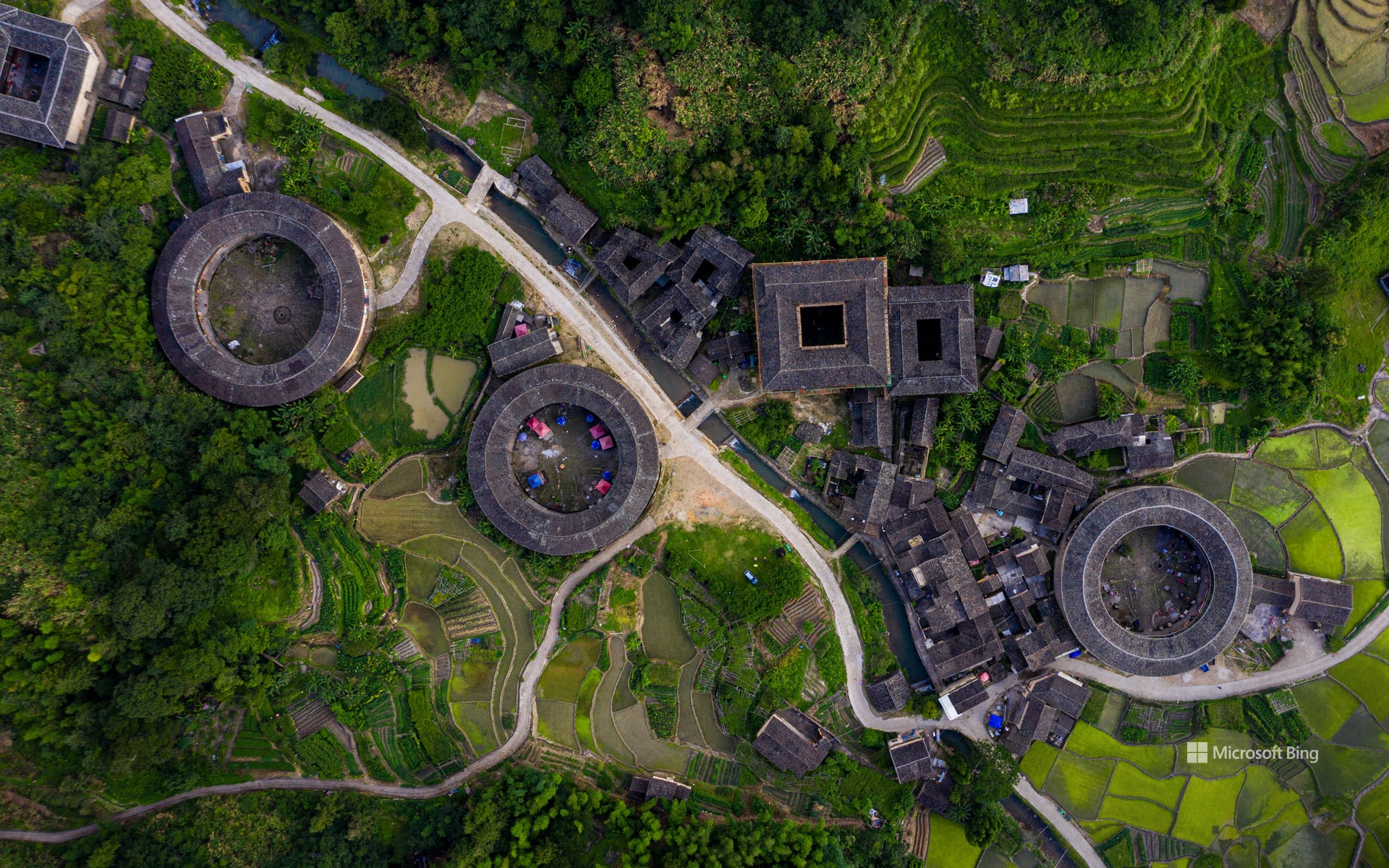福建土楼,福建省历史文化遗产建筑,中国 Fujian Tulou complex of historical and cultural heritage buildings in Fujian province, China (© Hongjie Han/Getty Images)

福建土楼,福建省历史文化遗产建筑,中国 Fujian Tulou complex of historical and cultural heritage buildings in Fujian province, China (© Hongjie Han/Getty Images)
被保存得很好的古建筑 In perfect shape
福建土楼,中国
准备好踏入独特的建筑世界了吗?在这里,主流的住宅是如此的古旧。今天的图片展示的是福建土楼,它们修建于12世纪至20世纪,是中国福建东南部山区客家人独一无二的乡村住宅。客家人是汉族的一个独特分支,拥有独特的客家文化。福建土楼便是客家人在辗转迁徙中,发扬古老建筑技术创造的“建筑奇迹”。土楼以竹条作为支撑,由粘土、沙土和灰瓦建造而成。这些圆形住宅有着浅色的墙壁,深色的屋顶和宽敞的内部空间,从上往下看,它们就像一个个巨大的轮胎或卷筒侧躺在道路旁。
从历史上看,土楼既是客家人集体居住的空间,也是抵御外敌的“堡垒”。其建筑结构体现了平等、团结的原则。土楼内部的家庭住房面积均等,房屋形状一致,这种平等的聚居方式,大大增强了客家人的凝聚力。2008年,联合国教科文组织将46个福建土楼遗址列为世界遗产,以表彰其独特的建筑传统。如果你想要不同寻常的度假体验,不妨去福建土楼感受一下独特的客家文化。
Fujian Tulou, China
Let's step into a world of giant earthen homes designed to house a village. These 'tulou' structures, built between the 12th and 20th centuries, are the dwellings of the Hakka community in China's mountainous southeastern Fujian region. The homes are constructed from clay, sandy soil, and gray tiles, with bamboo strips serving as the support. They were built to house a whole clan, up to 800 people each. From above, these round dwellings look like giant tires or reels lying on their sides, with light walls, dark roofs, and spacious interiors.
Historically, these buildings were communal living spaces and defensive zones for Hakka clans. They were built with uniformly sized and shaped family areas, fostering a sense of equality and community. In 2008, UNESCO added the Fujian tulou, which includes 46 of the buildings, to its list of World Heritage Sites, recognizing their unique building tradition.